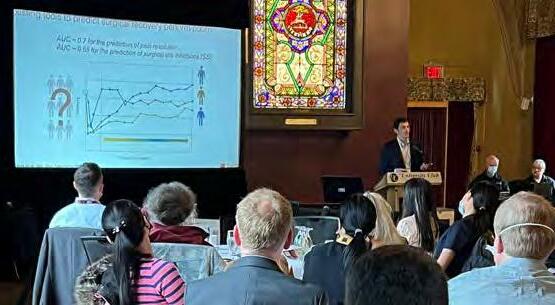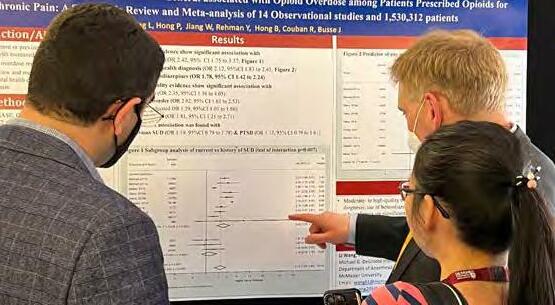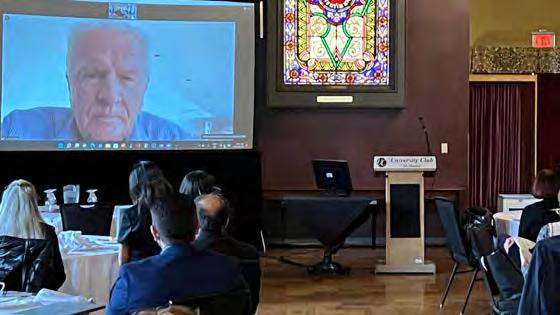
2 minute read
Engagement
Engagement Canadian Pain Care Forum
Dr. Jennifer Nash answers questions following her presentation at the January 2022 Canadian Pain Care Forum.
Is there a better way to manage chronic pain patients in a primary setting? That was the question, said Dr. Hillel Finestone from the University of Ottawa, that led to the development of nurse-led programs in a community primary care setting.
Dr. Finestone was just one of the speakers invited to present this past year at the Canadian Pain Care Forum (CPCF). The CPCF met in October 2021, with a virtual session due to COVID-19, and took a look at the role of pain education across multiple disciplines.
In addition to Dr. Finestone, the October meeting saw Dr. Phil Emberley, and members from his team, speak about the Canadian Pharmacists Association’s role in interdisciplinary pain care. In January 2022, we continued our health professional pain education survey with Dr. Jennifer Nash, an Assistant Professor with McMaster University’s Department of Anesthesia, who presented the pain curriculum in chiropractic training. Dr. Fiona Webster, an Associate Professor at Western University’s Arthur Labatt Family School of Nursing, also discussed the issue of equity of access for pain and addiction care in marginalized populations.
CPCF membership continues to grow. We are now at 129 members, representing 90 organizations, and we are always looking for new members to represent our various stakeholders.
About the Canadian Pain Care Forum
90
participating organizations.
16
advocacy groups or organizations representing people with lived experience.
12
participating hospitals or clinics across the country.
9
participating provincial or national healthcare associations.
“There is sexual dimorphism in pain perception,” said McMaster’s own Dr. Gurmit Singh as he spoke at the seventh Annual Persistent Post-Surgical Pain Symposium. “Our data suggests that pain is differentially regulated in males and females through the immune system. Immune modulation in males is dampened by testosterone and heightened in females due to a more robust immune system and the X chromosome.”
After a two-year hiatus, clinicians, researchers and trainees from around the world gathered at McMaster’s University Club to learn about predictors of chronic pain following surgery. The easing of restrictions meant many participants were able to gather, once more, in person, with the symposium making use of technology to allow those unable to attend to participate remotely.
Highlights included talks looking at risk assessment of patients undergoing surgery; reducing hospital stays and complications with enhanced recovery programs; mechanisms of, and interventions for, chronic pain after surgery; and patient-centred pre-surgical rehabilitation for lumbar spinal stenosis. Keynote speaker Brice Gaudillière from Stanford University described his lab’s use of biomarker analysis to predict recovery after surgery including the occurrence of pain.
A poster session was held for those in attendance to peruse and discuss following lunch. More than 50 people took part in the Symposium, and plans for the eighth Annual Persistent Post-Surgical Pain Symposium are already underway.



Top: Dr. Brice Gaudillière, Associate Professor at Stanford University School of Medicine, discusses risk assessment of patients undergoing surgery. Middle: Drs. Benham Sadeghirad, Li Wang and Jason Busse discuss a research poster. Bottom: Dr. Henrik Kehlet, Professor at Copenhagen University, presents virtually on enhanced recovery programs to reduce hospital stays.










